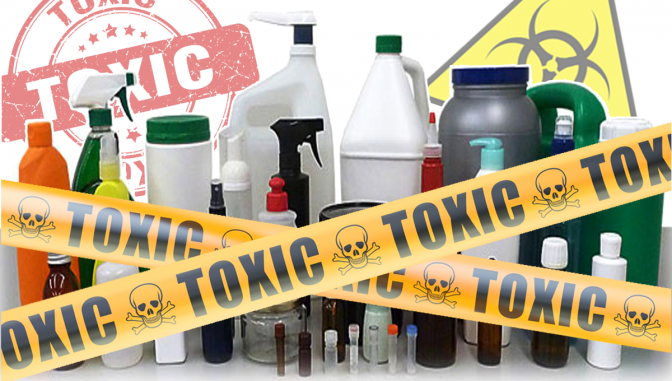Pot Growers Wrestle with Pesticide Problems

When commercial scientific testing of cannabis began in 2010 with the founding of Steep Hill Labs, in Berkeley, Calif., aficionados were ecstatic. Finally, cannabis sample data—initially regarding potency, as indicated by the percentage of THC, and now including CBD and other cannabinoid percentages, and the presence of any microbiologic contaminants like aspergillum—was available to consumers.
Lab testing quickly spread to Colorado and Oregon, where cannabis was available medically before adult use was voted in. Consumer buying patterns reflect the importance of this data, as people routinely choose the more potent options. Buyers for dispensaries use the data to eliminate any samples that test positive for mildew or molds, many of which are not visible to the naked eye.
When states began to legalize marijuana in 2012, testing was built into the new laws. But as more cannabis labs have opened, state oversight and regulations have lagged far behind the unfortunate reality of the prevalence of pesticides revealed by today’s super-sensitive testing, creating cannabis product shortages.
Pesticide testing and terpene tests are relatively recent additions to the testing pantheon. The states where pesticide testing is now mandated (Oregon, Colorado and Washington) have each adopted different standards regarding the maximum allowable level of pesticide residue. Until last year, pesticides were measured in parts per million (PPM); now, it’s parts per billion (PPB).
 No common standard exists for pesticides in plant material to be smoked, other than those for tobacco, so most states have adopted levels specified for allow able pesticide amounts in food. Since the body processes edible chemicals far differently than smoked ones, these standards are, in fact, not applicable or effective. As a result, most businesses have adopted a zero-tolerance policy for pesticides in cannabis.
No common standard exists for pesticides in plant material to be smoked, other than those for tobacco, so most states have adopted levels specified for allow able pesticide amounts in food. Since the body processes edible chemicals far differently than smoked ones, these standards are, in fact, not applicable or effective. As a result, most businesses have adopted a zero-tolerance policy for pesticides in cannabis.
While zero tolerance seems like a good idea, in practice it’s having a devastating effect on everyone from edible bakers and extract makers to flower growers and the dispensaries that sell cannabis products. These problems stem from the lack of standard testing protocols, as well as the incredible sensitivity of the instruments used today, primarily high-grade pressure liquid chromatography (HPLC) machines, which can detect minute levels of contaminants.
In Oregon, these new levels of sensitivity have sent shockwaves through the industry. Many producers, from flower growers to hash makers, and dispensaries have had to lay off workers, and the flow of goods has slowed dueto many previously acceptable products being flagged for unacceptable pesticide levels. In response to this crisis, in December the Oregon Marijuana Authority loosened the rules until May, while it reviews the standards.
It bears repeating that all of these standards have been set with little to no previous data on pesticide levels in cannabis. While everyone agrees that pesticides have no place in cannabis cultivation, the reality is that going from an underground, unregulated industry to a fully transparent one takes time.
Cross-contamination is also an issue: If the HPLC machines are not properly cleaned between uses, pesticide residues may contaminate a new sample. The lack of standard lab protocols and enforcement contributes to this problem, as well. Oregon, with fewer than 5 million people, offers a glimpse into the problems the cannabis industry faces as California, the world’s sixth-largest economy, moves forward to implement its new adult-use cannabis law.
Many of the larger and more forward-thinking companies in California are already aggressively testing for pesticides and working hard to ensure that they have adequate supplies of clean cannabis. “We’re down to only having a couple of suppliers that we can count on to consistently deliver clean shake,” says Joe Gerlach, owner of Korova Edibles, one of California’s largest edibles companies. “We didn’t think about this last year. Legalization for adult use has changed so much of our business model in a really short time. It’s going to be hard to scale up to the size we want to with this pesticide problem. It’s very frustrating.”
California will need to learn from Oregon’s situation. The Golden State’s market is larger than those of all the other legal states combined, yet there’s still no regulatory framework for, or standardization of, lab testing. This can result in a sample producing different results at different labs.
Obviously, no one wants pesticides in any amount in their herb, but the cold, hard reality is that much of the nation’s sun-grown cannabis has long been sowed with pesticides. At this year’s Emerald Cup (see Issue 22), more than 25% of the entries tested positive for pesticides—and this is a contest that boasts of its organic outdoor entries.
The pesticide problem and how the industry deals with it will be a major issue over the next several years. Many people will have to learn how to grow their crops without resorting to toxic poisons.
If you enjoyed this Freedom Leaf article, subscribe to the magazine today!

